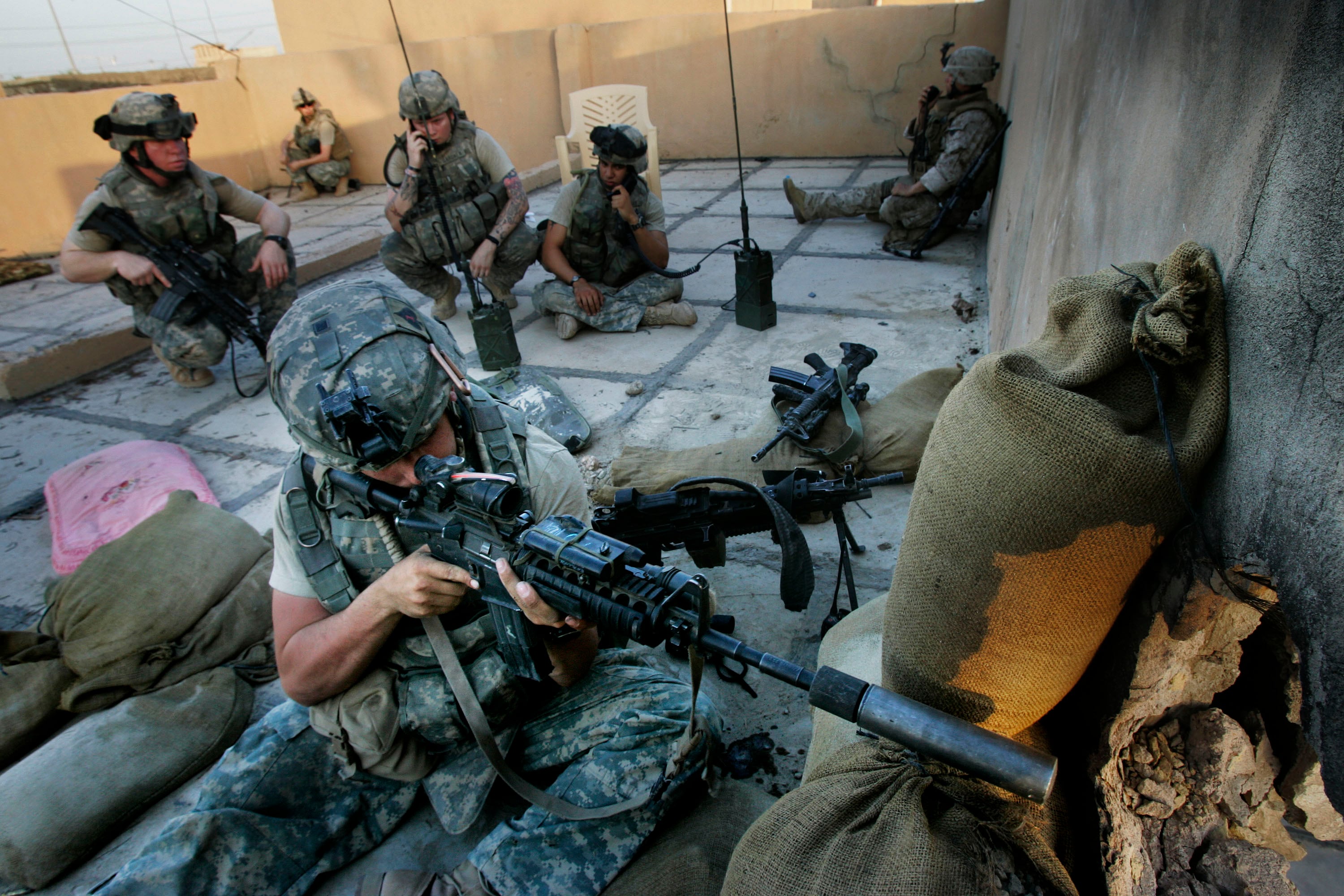Troops agree with President Donald Trump that we should keep an eye on Iran — but that doesn’t mean they want a big presence in Iraq to do so, the results of a recent Military Times poll suggest.
On Sunday, Trump told CBS’ “Face the Nation” that he planned on moving the roughly 2,000 troops currently stationed in Syria to Iraq so the U.S. can better “watch Iran.”
“All I want to do is be able to watch," Trump said. "We have an unbelievable and expensive military base built in Iraq. It’s perfectly situated for looking at all over different parts of the troubled Middle East.”
In an October Military Times poll, which included responses from nearly 900 active-duty troops, 51 percent of respondents said the U.S. should either slightly or substantially decrease its force levels in Iraq, with fewer than 20 percent saying we should slightly or substantially increase our presence.
Meanwhile, 40 percent of troops see Iran as a significant or very significant threat and an additional 37 percent view the country as a moderate threat.
That said, service members view Iran as a lesser threat than cyber terrorism, foreign Islamic terrorists, China or Russia.
The poll results suggest that many active-duty troops would agree with the spirit of Trump’s pronouncement, but might not think sending more troops to Iraq is the best way to go about it.
“My belief is that soldiers usually trust their leaders and their leaders’ leaders to get that part right," said Thomas Spoehr, director of the Heritage Foundation’s Center for National Defense.
Spoehr, a retired Army lieutenant general and Iraq veteran, said that active-duty troops generally take their orders “day-by-day” and just focus on the task at hand.
In terms of Trump’s declaration about moving more troops into Iraq, Spoehr said that it’s “better than completely withdrawing from the entire region,” though he was a bit dubious about the prospect of taking troops out of Syria, a country the Military Times poll revealed that active-duty troops are split on whether more or less military involvement is necessary.
“Iraq has a functioning central government. There’s nothing like that in Syria,” Spoehr said.
That said, Spoehr said he believes that Iraq may be a bigger concern than either the Trump administration or troops in the Middle East believe it to be. Spoehr said that while Iraq isn’t as close to Syria as it looks on a map, it’s still entirely possible for Iran to use it as a “corridor” to get to Syria.
Plus, Spoehr said, Iraq is full of “different players” like Shiite militias and Iranian military forces. Iraq may feel quieter than Iran or Syria, and its proximity to both might create a false sense of calm for American troops there.
“You can be lulled into thinking the threat level in Iraq is low,” Spoehr said.
Nick Heras, a fellow with the Center for a New American Security’s Middle East Security Program, painted a similarly pessimistic portrait of modern Iraq.
“Iraq is one series of car bombings away from being a failed state,” he said. “Iraq has all the existential human security issues of the worst nations in the world with active terrorist organizations still based there and seeking influence.
“On paper, Iraq should be one of the wealthiest countries in the world,” he said, pointing to its abundance of natural resources, particularly oil. “But because of the structural issues and terrorist organizations, it’s a very difficult country.”
Then there’s Iran, a nation clearly high on Trump’s radar.
“Iran is a behemoth, and it is a state actor that can threaten U.S. forces throughout the Middle East,” Heras said. “Iran is the type of beast that has its tentacles all throughout the Middle East, all ready to strike Americans.”
Still, he noted that Iran lacks both the nuclear capabilities and the international reach of Russia or China.
Spoehr pointed out that Pentagon leaders have been pushing to make a pivot from the Middle East to the Asia-Pacific region.
“That’s a lot of the strategic messaging that the Department of Defense has put out in the last year,” Spoehr said. “It really clearly puts an emphasis on Russia and China, and diminishes operations in the Middle East. If troops are expressing that, that’s actually a success for DoD.”
The Military Times poll also asked the question: “How likely do you think it is that the U.S. military will be drawn into a new major conflict within the next year?”
While the results from active-duty troops were mixed, Spoehr said that Iran instigating a large-scale fight is a distinct possibility given recent “flare-ups” like the 2016 incident in which Iran took four U.S. Navy sailors hostage after their boats accidentally entered Iranian waters.
“This is kind of a message that military chiefs are trying to emphasize,” Spoehr said. “All the services are pushing for being as ready as possible, being ready to fight tonight. So, it’s helpful to talk about this in terms of, 'Hey ‚this may happen soon or even this year.’ ”
Heras concurred, specifically saying that Trump framing his troop transfer as a counter-Iran effort puts “a big target on U.S. forces.”
“U.S. forces in Iraq and Syria are caught in the web of the resistance that’s led by Iran,” he said. “In the months and years to come, the key challenge for the U.S. will be how to maintain a presence in the Middle East without going to war with Iran. And it’s increasingly more difficult to avoid that conflict with Iran.”




